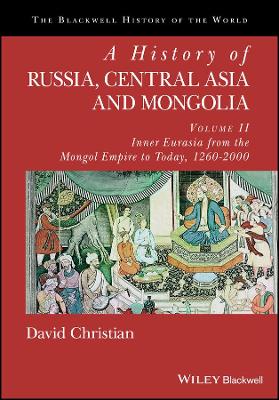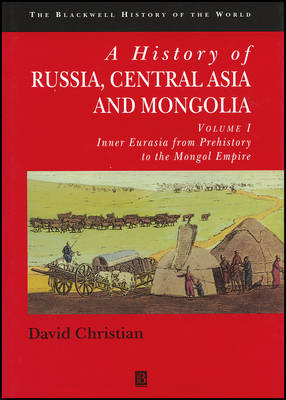Blackwell History of the World
2 total works
This is Volume One of "A History of Russia, Central Asia and Mongolia", covering from the time of the first inhabitants in the region right up to the Mongol Empire in the 13th century of the modern era. Inner Eurasia, as the author defines it, comprises: most of the former Soviet Union and Russia's territories in Siberia; Russia's former empire in Central Asia; China's central Asian empire; and Mongolia, both the parts within China and those within the Mongolian People's Republic. The author presents Inner Eurasia as a coherent region with an underlying unity in geography and history despite its cultural and ecological variety. This volume charts developments from the Old Stone Age, through the emergence of the earliest farming societies of Central Asia, and the pastoral nomadic societies of peoples such as the Scythians, the Huns and the Turks. It also describes the emergence of a powerful agrarian state in the lands of Rus, where eventually the modern Russian state would appear. The book describes the political and economic history of these societies as well as their distinctive lifeways, and shows how their evolution reflects the geography and ecology of Inner Eurasia.
A History of Russia, Central Asia and Mongolia - Inner Eurasia from Prehistory to the Mongol Empire V1
by David Christian
Published 7 November 1998
This is a history of Russia, Central Asia and Mongolia from the time of the first inhabitants of the region up-to the break-up of the Mongol Empire in 1260 AD. Inner Eurasia, as the author defines it, comprises most of the former Soviet Union and Russia's huge territories in Siberia; Russia's former empire in Central Asia; China's central Asian empire; and Mongolia, both the parts within China and those within the Mongolian People's Republic. The author presents Inner Eurasia as a coherent region with an underlying unity in geography and history despite its cultural and ecological variety.This volume, the first of two surveying this region, charts developments from the Old Stone Age, through changes under such peoples as the Scythians, the Huns and the Turks, to the emergence of an identifiable "Rus" - the society from which modern Russia and Ukraine have evolved. The book sets political events in the broadest context of social and economic change, linking evolution to the vast geography of the territories it describes.
Together with volume II, covering the period up-to the present, the work represents the most thorough, up-to-date study of this fascinating and much misunderstood region of the world.
Together with volume II, covering the period up-to the present, the work represents the most thorough, up-to-date study of this fascinating and much misunderstood region of the world.

